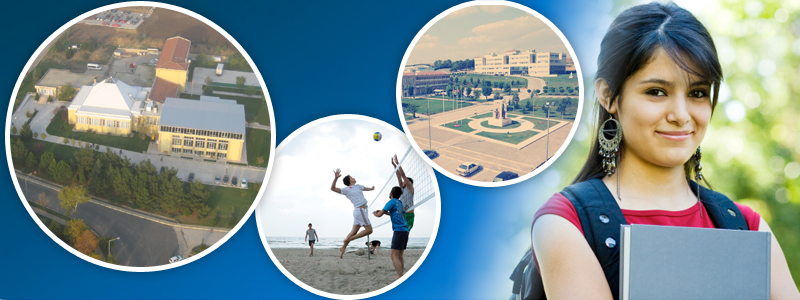









| Academic Unit Presenting the Program | Histology and Embryology | |||||||||||||||||||||||||||||||||||||||||||||||||||||||||||||||
| Program Director | Head of Department Dr. Öğr. Üyesi Elif POLAT Head of Institute Prof. Dr. Selami GÜRKAN Institute Deputy Director: Assoc. Prof. Dr. Birol TOPÇU Institute Deputy Director: Assoc. Prof. Dr. Serhat ÖRÜN | |||||||||||||||||||||||||||||||||||||||||||||||||||||||||||||||
| Program Type | Master Degree With a Thesis Program | |||||||||||||||||||||||||||||||||||||||||||||||||||||||||||||||
| Level of Degree Earned | Master's Degree | |||||||||||||||||||||||||||||||||||||||||||||||||||||||||||||||
| Degree Earned | Upon graduation, you will receive a Master's degree in Histology and Embryology (Medicine). | |||||||||||||||||||||||||||||||||||||||||||||||||||||||||||||||
| Education Type | Tam zamanlı. | |||||||||||||||||||||||||||||||||||||||||||||||||||||||||||||||
| Registration Acceptance Conditions | In order to apply to the Histology and Embryology (Medicine) Master's program, candidates must; 1) Have a bachelor's degree from the Faculties of Medicine, Dentistry, Veterinary Medicine and Pharmacy; Department of Biology, Molecular Biology and Genetics, Medical Biological Sciences of the Faculties of Science and Letters, received at least 55 standard points in the numerical score type from ALES conducted centrally by ÖSYM, or have been successful in internationally accepted exams whose equivalence is accepted by the Senate instead of the ALES result and whose success base points are determined. b) In accepting students to master's programs, the success grade is calculated by adding 20% of the undergraduate graduation weighted grade point average, 50% of the standard score obtained from ALES, and 30% of the score obtained as a result of the interview conducted by the jury established by the institute's board of directors for each department. In order for a candidate to be considered successful, the success grade must be at least 65. Students are accepted as many as the announced quota by ranking from the highest score to the lowest. | |||||||||||||||||||||||||||||||||||||||||||||||||||||||||||||||
| Recognition of Prior Learning | Successful students who have completed at least one semester in another department of the relevant university or institute of technology or in a postgraduate program of another higher education institution may apply for the horizontal transfer quota announced in the relevant department. Horizontal transfer is possible with the approval of the relevant department head and the decision of the institute's board of directors. | |||||||||||||||||||||||||||||||||||||||||||||||||||||||||||||||
| Degree Requirements and Rules |
to take a minimum of 7 courses with a minimum of 21 local credits. to succeed in all the courses with a letter grade of at least CC/S to prepare and defend a master's dissertation to have a Cumulative Grade Point Average of at least 2.00/4.00 with a minimum of 120 ECTS credits. | |||||||||||||||||||||||||||||||||||||||||||||||||||||||||||||||
| Program Profile | The language of instruction is Turkish. The program includes compulsory and elective courses related to the field of histology and embryology (medicine). Compulsory and elective courses related to the field are taken in the 1st and 2nd semesters; thesis work related to the field is carried out in the 3rd and 4th semesters. | |||||||||||||||||||||||||||||||||||||||||||||||||||||||||||||||
| Occupational Profiles of Graduates | 1- Graduates of this program can be employed in universities affiliated with the Higher Education Institution and in need of faculty members, provided that they meet the necessary conditions. 2- Light Microscopy, Electron Microscopy and in vitro fertilization embryology laboratories | |||||||||||||||||||||||||||||||||||||||||||||||||||||||||||||||
| Access To Upper Degree | Candidates who successfully complete their master's degree can study in doctoral programs provided that they receive a passing grade from the ALES exam and have sufficient knowledge of the English language. | |||||||||||||||||||||||||||||||||||||||||||||||||||||||||||||||
| Exams, Assessment and Grading | To be considered successful, the success grade must be at least 65 points in the master's program. The grading system to evaluate the student performance is signified by the values in the chart below. For each course students are graded by letters. Letter grades, coefficients and ratios are as follows:
| |||||||||||||||||||||||||||||||||||||||||||||||||||||||||||||||
| Graduation Requirements | ||||||||||||||||||||||||||||||||||||||||||||||||||||||||||||||||
| Teaching Methods | Teaching-learning methods and strategies are selected to increase students' skills such as self-study, lifelong learning, observation, teaching others, presentation, critical thinking, teamwork, and effective use of informatics. In addition, attention is paid to ensuring that the teaching style supports students with different abilities. The teaching-learning methods used in the program are listed below*:
*One or more of the listed methods can be used depending on the specificity of the course. | |||||||||||||||||||||||||||||||||||||||||||||||||||||||||||||||
Program Outcomes1-To be able to conduct interdisciplinary team work2-To be able to communicate effectively 3-To be able to recognize and engage in life-long learning 4-To be able to know and use modern techniques, skills, and tools necessary for medical practice 5-To be able to identify, formulate and solve medical problems 6-To be able to apply knowledge of the related field 7-Gain a knowledge of contemporary issues 8-To be able to know the normal human body development, structure and functions 9-To be able to understand and learn the basic medical science concepts 10-To be able to design and conduct experiments as well as to analyze and interpret data | ||||||||||||||||||||||||||||||||||||||||||||||||||||||||||||||||
Curriculum
| ||||||||||||||||||||||||||||||||||||||||||||||||||||||||||||||||
Matrix of Course - Program Outcomes | ||||||||||||||||||||||||||||||||||||||||||||||||||||||||||||||||